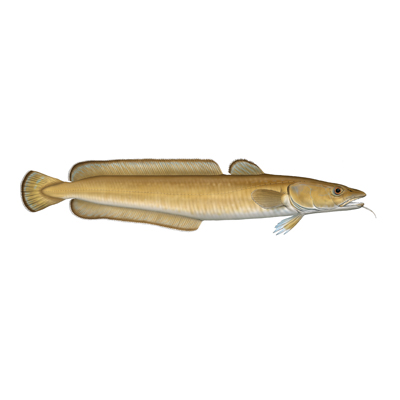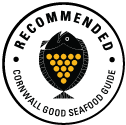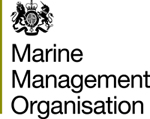

Ling is a member of the cod family. It is long and slender with a mottled olive and brown colour. The flanks are lighter with brownish blotches and the belly is white. It has delicious white flesh and is excellent in a range of dishes.
Ling is an eel like member of the cod family. Stocks of ling appear to be relatively healthy in our waters although there is little research published. Fishermen landing to Looe and Plymouth report good stocks of ling. The latest ICES report shows that fishing effort is below dangerous levels and that stocks are increasing. Ask for ling caught by inshore Cornish day boats uisng gill nets or demersal trawls.
94 tonnes of ling were landed to Cornish ports in 2021 (MMO data) work £123k.
Updated July 2023

Baited hooks set on the seabed and left to fish. Rarely used by Cornish boats but was once very common.
Learn more
Cornish vessels landing to Cornish Ports
Demersal trawls are large nets that are pulled through the water with the bottom edge of the net touching the seabed. At each edge the net is pulled open by metal ‘trawl doors’. Sometimes referred to as Otter trawling.
Learn moreCornish vessels landing to Cornish Ports
Beam trawls are nets attached to a steel beam that holds the net open. The belly of the net is made of chains and the upper surface of the net is mesh. Beam trawlers pull two nets along the seabed simultaneously.
Learn moreCornish vessels landing to Cornish ports
Gill nets are lightweight nets made of nylon (monofilament) fishing line that are anchored to the seabed and are used to catch fish by entangling the gills.
Learn moreCornwall Good Seafood Guide rates fish on sustainability using a scale of 1 to 5.
1, 2 and 3 are recommended, Fish to avoid are rated 5.
We use the system devised by the Marine Conservation Society (MCS) so our scores are comparable with the scores produced by MCS for the UK and fisheries from all around the world. For more information on scoring click here.
Ling grow extremely large, up to 2 meters in length and resemble a cross between a conger eel and a cod. Ling are slow growing and can live for up to 25 years. They are seen by divers occasionally but the majority are found at depths of between 100m and 400m deep. Ling are active predators that feed on other fish such as cod and herring and crustaceans such as crabs and lobster. Ling spawn between February and May. Ling has a high vulnerability to over fishing (77 out of 100 ref Cheung et al 3005), but a medium resilience. Ling prefer cold waters and are migratory and widely distributed around the North east Atlantic.
Stocks have not been studied in great detail so we dont know how healthy the stocks are, but infomation from the fishing industry states that catches have been steady for the past five years and the stocks appear healthy. The latest ICES advice for the whole of the North Altlantic suggests that fishing effort is below sustainable levels but stock biomass is not known. Landings to Cornwall of ling are decreasing and in 2019 were 75 tonnes this is a tiny fraction (approx 2%) of the landings caught by the European and Faroes fleet operating to the North of Scotland. Studies of these large scale longline and trawl fisheries show that Ling stocks are stable and possibly increasing, however in area 7 the biomass appears to be decreasing (ICES). Landings to Cornwall have decreased significantly since the 1990’s but this may be due to reduced effort. Longlining targeting ling is no longer carried out and the trawler fleet has reduced in size. Catch per unit effort data suggests that stocks are either stable of increasing.
Ling catches are restricted through Quotas set by the EU Common fishing Policy. No specific management objectives are known to ICES. The legal minimum landing size for ling in EU waters is 63cm. However ling matures at 80-90cm, so this is an inadequate measure to protect immature fish.
Ling are caught by beam trawlers, netters and demersal trawlers. Longlining targeting ling and hake, once a mainstay of the Newlyn fleet is now a rare practice with many boats having switched to netting and trawling in the 1970’s and 80’s. All over 10m vessels netting outside the 6nm limits now have to use dolphin scaring pingers to reduce the chances of accidentally catching porpoises or dolphins in the nets. Inshore vessels are not using pingers and there are known issues with bycatch of cetaceans, seabirds, seals and sharks and rays with gill net fishing which has reduced the rating for gill net caught ling.






Cornwall Good Seafood Guide is underpinned by the Marine Conservation Society (MCS) Good Fish Guide. The first UK consumer guide to sustainable seafood. For more information visit www.fishonline.org
Cornwall Good Seafood Guide is here to help us all make sustainable seafood choices. Choices that will help us keep the oceans healthy and Cornish fishers' futures safe. This website is funded by Cornwall Wildlife Trust. If you would like to make a meaningful difference to the health of our oceans, please consider making a donation to the Cornwall Wildlife Trust Ocean Emergency fund. Your donation will help safeguard these remarkable environments, ensuring that they continue to thrive for generations to come. Together, we can be stewards of the seas and champions for a healthier, more sustainable future.